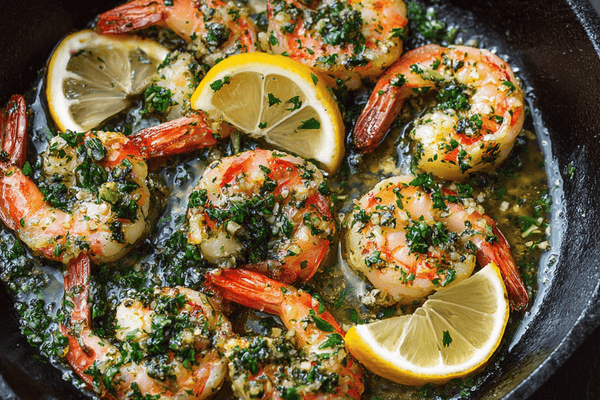 Sharpening a knife is no mean feat and while a lot of people fall into the trap of thinking that this is an easy task, you really should think again. There are a lot of things to consider when it comes to knife sharpening and many would agree that it’s a real skill.
Sharpening a knife is no mean feat and while a lot of people fall into the trap of thinking that this is an easy task, you really should think again. There are a lot of things to consider when it comes to knife sharpening and many would agree that it’s a real skill.One of the things that you might find being referred to time and again is the burr on the blade. But what on earth is this and what is it for?
A burr is simply a small strip of metal along the cutting edge of your knife. Some people say that the burr is like a fine wire edge.
But even understanding what a burr is still begs the question how do you feel for a burr on a knife? You can’t just go in and run your hands over the blade; as we all know, knife edges are super sharp so you have to be careful.
But don’t worry; I have got you covered and in this guide, I’ll be explaining everything you need to know about knife burrs, what they are and how to feel them so that sharpening and micro burr removal becomes a lot easier.
Table of contents
Knife Burrs Explained
Before we get into the nitty gritty of feeling for burrs, it’s really important to gain an understanding of what a burr actually is. When you hear the term burr, this is referring to the metal that is along the edge or the tip of the knife’s blade. It can either be the very tip of the cutting edge or a strip of metal or steel that is on either side of the blade. During the knife sharpening process, the burr will form on the opposite side than the edge of the knife you have just worked on.
During the knife sharpening process, the burr will form on the opposite side than the edge of the knife you have just worked on.You could also look at the burr as being a raised edge as well as small bits of material that stay on the blade during sharpening. There are many people that would describe it as a wire since it can appear like a fine piece of wire that is left behind once you have sharpened the knife edge.
But what does this burr mean, exactly? In the most simple terms, a burr tells you that the surface of the blade is not totally flat, although this is at an almost microscopic level so it’s incredibly difficult to see with the naked eye.
However, it is possible to get a closer look using a special magnifying tool where you will notice that there are minute deformations within the metal at the top of the cutting edge. It might appear as a small fold which is on the opposite side to that which has just been sharpened.
What's the Importance of the Burr?
Pretty much all kitchen knives are made from some sort of stainless steel. There are a plethora of reasons for this choice of material but that is something I will go into on a different day. For now, just know that one of the properties of stainless steel is that it is malleable. This benefits you when it comes to sharpening the blades as you can use abrasive methods to get rid of some of the metal to reveal a sharper knife's edge.

When you sharpen your knife blades, you must make sure that the whole cutting edge makes contact with your whetstone. If you don’t then there is a very high chance that the blade won’t get an evenly sharp finish. But the presence of a burr tells you that all of the cutting edge has been sharpened.
Sounds crazy, right? But think about it; the burr is nothing more than the collection of all of the tiny pieces of metal that you have removed during the sharpening process. These minute pieces move to the top of the blade where they collect and form a layer which we know as the burr.
What this tells you is that you have sufficiently sharpened that side of the blade and you are now good to move onto the second side. What’s interesting is that, until the burr appears, you cannot say that you have a sufficiently sharp knife. You can get the knife to a relatively sharp state but if you want the best results then you’ll need to get a burr to form first!
If you don’t get a burr, this not only means that the knife won’t be as sharp as it potentially could be but it also means that it won’t retain its edge for as long. So, in the grand scheme of things, you’ll only end up having to sharpen the blade sooner rather than later.
How Do You Feel For a Burr On a Knife?
OK, so you do need to be able to check whether a burr has formed and as I mentioned earlier, using a magnifying tool is one of the safest ways to do this. However, you won’t always have a tool to hand and it’s good to learn how to feel for a burr on a knife so you have this skill under your belt.But one of the most critical things when sharpening knives is that you remain safe. You cannot go in all guns blazing and rub your fingers all over a sharp cutting edge. This is a dead set way to land yourself in A&E so just don’t do it!
Moreover, if you feel in any way uncomfortable or in doubt about checking for a burr on your knife, it’s not worth risking it. There are professional sharpening services out there and there is no shame in using these, especially where your safety is concerned.
If you are confident in feeling the burr on your knife then you will need to take the following steps:
● Start by placing the thumb onto the opposite side of the blade that you have just finished sharpening.
● Now slide the finger from the knife’s spine down towards the edge of the blade.
● Where a burr is present, you will notice that your finger runs with a slight catch on the metal. Note that this may be minimal. However, if there is no burr then you should be able to run your finger from the spine to the edge smoothly with no unwanted resistance.

What Not to Do When Feeling the Burr On a Knife
You must make sure that you only slide your finger from the spine to the edge and never run it along the edge of the knife. A cut from a sharp knife might not even cause any pain as the razor sharp blade cuts through the skin. But believe me when I say that the risk is real and you’ll know about it once it happens!What’s more, if a blade is not sharp, this can often do more damage when it cuts you. Dull blades create a ripped cut that can be painful and a lot less simple to heal.
How to Get Rid of a Burr On a Knife
When you sharpen your knife blade, your actions will form a burr. This happens when you move the blade over the whetstone and small particles of steel move along to the edge of the blade. By following the instructions I provided above, you should be able to easily feel whether you have created a burr or not.
However, you don’t want to keep the burr on the knife so you will also need to know how to get rid of it. Fortunately, this is relatively simple and while knife sharpening can take a little practice, most people get to grips with it pretty easily.
Here are some simple steps on how to get rid of a burr from a knife.
● To begin the burr removal process, you will need to begin working on the other side of the knife. You can do this in exactly the same way that you sharpened the first side using your chosen method. Typically, the best way to sharpen knives is by using a sharpening stone or grit.
● Whereas you may have applied a decent amount of pressure to the first side of the knife, it’s important to dial that back a little on the second side in order to avoid the formation of another burr. If you can minimise the pressure, you should end up removing the first burr you created without a second one forming.
Sometimes, you will end up with what is known as a micro burr and this needs to be removed using a slightly different method. For this, you will need to swipe the knife over a leather strop. Make sure to do this on both sides.
A lot of homeowners might not have a leather strop and that’s OK. It is possible to achieve similar results by using a stack of newspapers.
When you have finished doing this, you can go back to the instructions I provided earlier on how to feel for a burr. If everything is smooth then you are good to go!
Final Thoughts
There is a seemingly worrying amount of terminology associated with knife sharpening and this can feel intimidating. One thing that you have likely heard more than enough times is people talking about the burr; but what is a burr and how do you even know if there is one?The burr is formed from the tiny particles of steel that come off the knife as you sharpen it and these accumulate at the tip of the blade on the opposite side that you have just sharpened. You’ll need to work on the other side to remove the burr and you can feel for this by running your finger from the spine down towards the edge. If anything catches, you’ve got yourself a burr!


